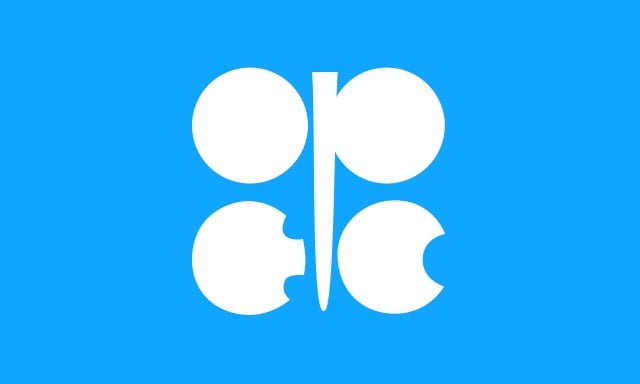
Source: Wikimedia Commons
Indonesia joined in 1962 and suspended its membership in 2009. Gabon was added in 1975 and terminated its membership in 1995. Ecuador suspended its membership in 1995 and resumed it in 2007.
The five founding members of the cartel must all agree on the admission of new members, giving any of the five veto power on expanding the organization. New members must also be approved by three-quarters of the other full members of the group. The cartel’s rules also allow for associate members, countries that do not qualify for full membership but that may be admitted under special conditions. There are currently no associate members of OPEC.
ALSO READ: Countries That Hate America the Most
The data come from OPEC’s 2014 Annual Statistical Bulletin and represents 2013 totals. Members are listed in declining order of oil reserves. We do not include proved reserves of natural gas, which total some 95 trillion cubic meters (about 3.35 quadrillion cubic feet) among the 12 nations, with Iran (34 trillion cubic meters) and Qatar (about 25 trillion cubic meters) claiming well over half the total.
Venezuela
298.40 billion barrels of proved reserves
$373.98 billion in 2013 GDP
Population – 29.99 million
Saudi Arabia
265.79 billion barrels of proved reserves
$745.27 billion in 2013 GDP
Population – 29.99 million
Iran
157.80 billion barrels of proved reserves
$366.26 billion in 2013 GDP
Population – 77.10 million
Iraq
144.21 billion barrels of proved reserves
$229.33 billion in 2013 GDP
Population – 35.10 million
Kuwait
101.5 billion barrels of proved reserves
$184.03 billion in 2013 GDP
Population – 3.96 million
United Arab Emirates (UAE)
97.80 billion barrels of proved reserves
$396.24 billion in 2013 GDP
Population – 8.46 million
Libya
48.36 billion barrels of proved reserves
$73.76 billion in 2013 GDP
Population – 6.30 million
Nigeria
37.07 billion barrels of proved reserves
$515.79 billion in 2013 GDP
Population – 172.29 million
Qatar
25.24 billion barrels of proved reserves
$202.17 billion in 2013 GDP
Population – 2.01 million
Algeria
12.20 billion barrels of proved reserves
$223.86 billion in 2013 GDP
Population – 38.30 million
Angola
9.01 billion barrels of proved reserves
$120.51 billion in 2013 GDP
Population – 19.18 million
Ecuador
8.83 billion barrels of proved reserves
$93.58 billion in 2013 GDP
Population – 15.78 million
ALSO READ: Countries Spending the Most on War
Sponsored: Find a Qualified Financial Advisor
Finding a qualified financial advisor doesn’t have to be hard. SmartAsset’s free tool matches you with up to 3 fiduciary financial advisors in your area in 5 minutes. Each advisor has been vetted by SmartAsset and is held to a fiduciary standard to act in your best interests. If you’re ready to be matched with local advisors that can help you achieve your financial goals, get started now.
Thank you for reading! Have some feedback for us?
Contact the 24/7 Wall St. editorial team.


